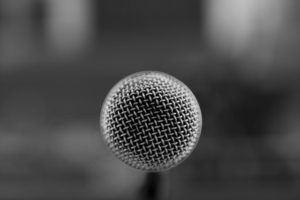Voice – Episode 116
Voice Anatomy
Larynx: a structure on top of the trachea (windpipe) and holds the vocal folds
Vocal Folds: also known as vocal cords; the soft tissue that vibrates and creates sound when air passes through them. There’s one on each side.
Vocal Box: the structure that surrounds the vocal cords. It’s made of 3 parts – a cover that is made of epithelial cells (similar to the inside of your mouth), vocal ligaments that hold it all in place, and the thyroarytenoid muscle that is responsible for relaxing the vocal cords into place.
Glottis: the opening in the middle of the vocal folds where they sperate for breathing and closes for talking and swallowing.
Voice Production
There are 3 levels of sound production to equal talking.
- Voiced Sound: this is the basic vibration of the vocal cords and creates a “buzzing” sound. This is the first step of babies learning to talk and communicate. We say the baby is “discovering their voice.”
- Resonance: the “buzzing” sounds are amplified by resonating chambers that include the throat, mouth, and nasal cavity. The sound produced by these chambers is what give you your distinct voice. To produce sound without using one or more of these resonating areas alters your voice significantly.
- Articulation: movement of the tongue, soft palate, lips, and jaw modifies and changes the sound to produce words and intelligible speech.
Singing
Singing adds the breathing system to regulate the air pressure that vibrates the vocal cords. The rhythm of putting words to music to create singing changes the pattern and length of words and syllables, and the strength of the diaphragm plays a big part in that.
Just like guitar strings, the tighter the vocal cords, the higher the pitch. More relaxed vocal cords produce a lower pitch. *If you listened to this episode, I’m so sorry for your ears!*
Connect with me
Support us on Patreon
Join the Pharmacist Answers Podcast Community on Facebook
Subscribe: iTunes, Stitcher, GooglePlay, TuneIn Radio
Music Credits: Up In My Jam (All Of A Sudden) by – Kubbi https://soundcloud.com/kubbiCreative Commons — Attribution-ShareAlike 3.0 Unported— CC BY-SA 3.0 http://creativecommons.org/licenses/b…Music provided by Audio Library https://youtu.be/tDexBj46oNI


